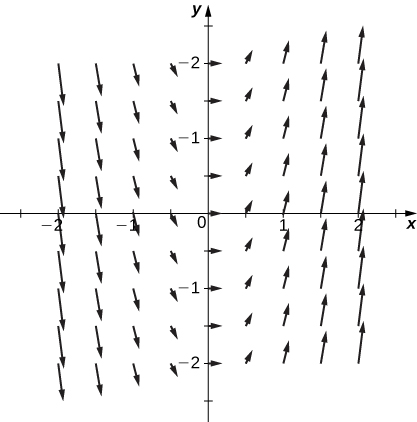16.9 : Exercices de révision du chapitre 16
- Page ID
- 197837
\( \newcommand{\vecs}[1]{\overset { \scriptstyle \rightharpoonup} {\mathbf{#1}} } \) \( \newcommand{\vecd}[1]{\overset{-\!-\!\rightharpoonup}{\vphantom{a}\smash {#1}}} \)\(\newcommand{\id}{\mathrm{id}}\) \( \newcommand{\Span}{\mathrm{span}}\) \( \newcommand{\kernel}{\mathrm{null}\,}\) \( \newcommand{\range}{\mathrm{range}\,}\) \( \newcommand{\RealPart}{\mathrm{Re}}\) \( \newcommand{\ImaginaryPart}{\mathrm{Im}}\) \( \newcommand{\Argument}{\mathrm{Arg}}\) \( \newcommand{\norm}[1]{\| #1 \|}\) \( \newcommand{\inner}[2]{\langle #1, #2 \rangle}\) \( \newcommand{\Span}{\mathrm{span}}\) \(\newcommand{\id}{\mathrm{id}}\) \( \newcommand{\Span}{\mathrm{span}}\) \( \newcommand{\kernel}{\mathrm{null}\,}\) \( \newcommand{\range}{\mathrm{range}\,}\) \( \newcommand{\RealPart}{\mathrm{Re}}\) \( \newcommand{\ImaginaryPart}{\mathrm{Im}}\) \( \newcommand{\Argument}{\mathrm{Arg}}\) \( \newcommand{\norm}[1]{\| #1 \|}\) \( \newcommand{\inner}[2]{\langle #1, #2 \rangle}\) \( \newcommand{\Span}{\mathrm{span}}\)\(\newcommand{\AA}{\unicode[.8,0]{x212B}}\)
Vrai ou faux ? Justifiez votre réponse par une preuve ou un contre-exemple.
1. Le champ vectoriel\(\vecs F(x,y) = x^2 y\,\mathbf{\hat i} + y^2 x\,\mathbf{\hat j}\) est conservateur.
- Réponse
- Faux
2. Pour le champ vectoriel\(\vecs F(x,y) = P(x,y)\,\mathbf{\hat i} + Q(x,y)\,\mathbf{\hat j} \), s'il\(P_y(x,y) = Q_z(x,y)\) se trouve dans une région ouverte\(D\), alors\(\displaystyle \int_{\partial D} P \,dx + Q \, dy = 0.\)
3. La divergence d'un champ vectoriel est un champ vectoriel.
- Réponse
- Faux
4. Si\(curl \, \vecs F = \vecs 0\), alors\(\vecs F\) est un champ vectoriel conservateur.
Dessinez les champs vectoriels suivants.
5. \(\vecs F(x,y) = \dfrac{1}{2}\,\mathbf{\hat i} + 2x\,\mathbf{\hat j} \)
- Réponse

6.


